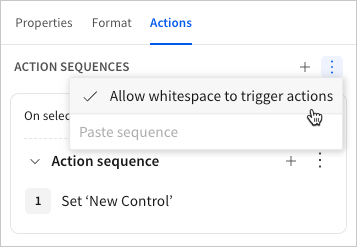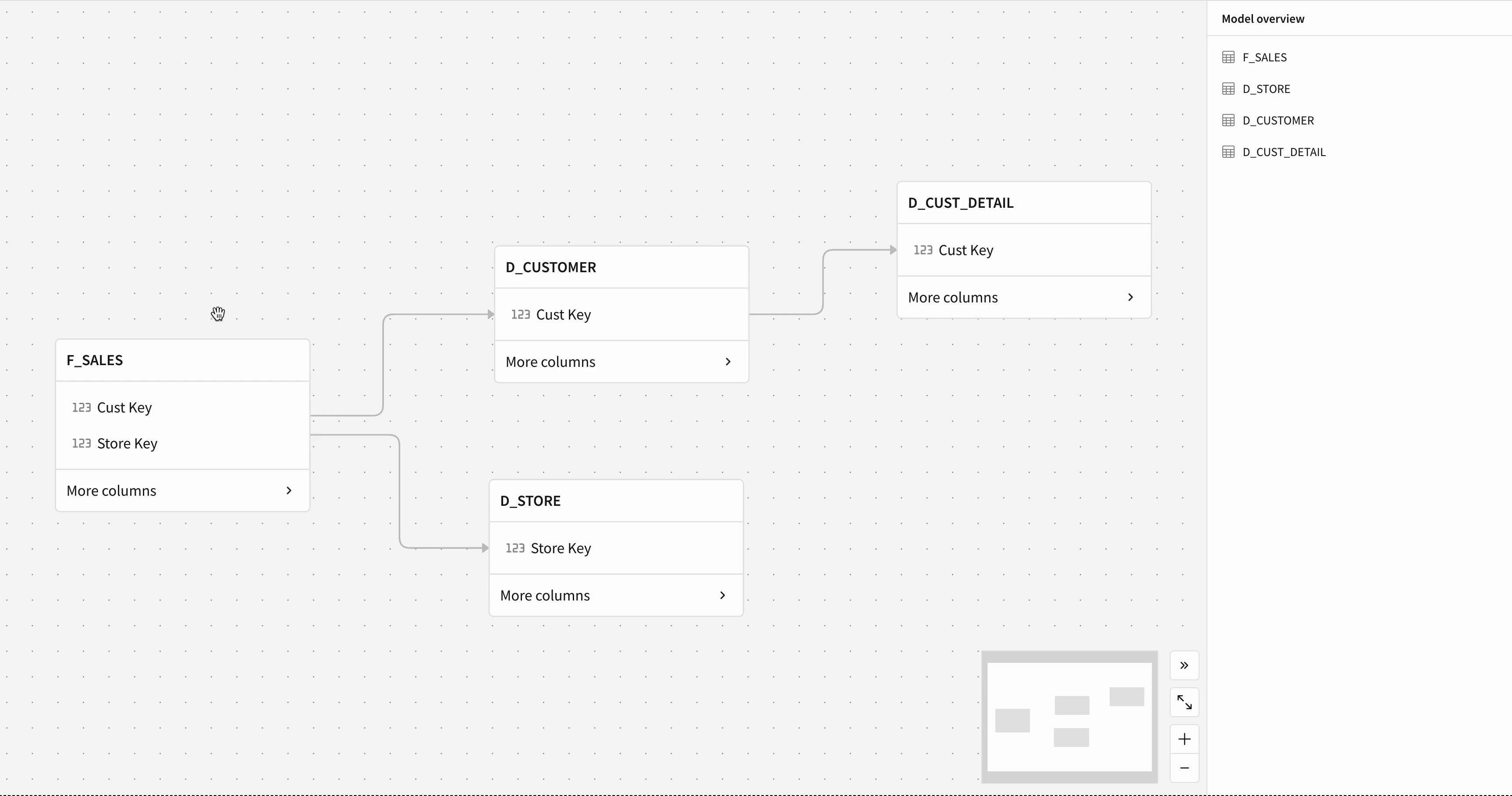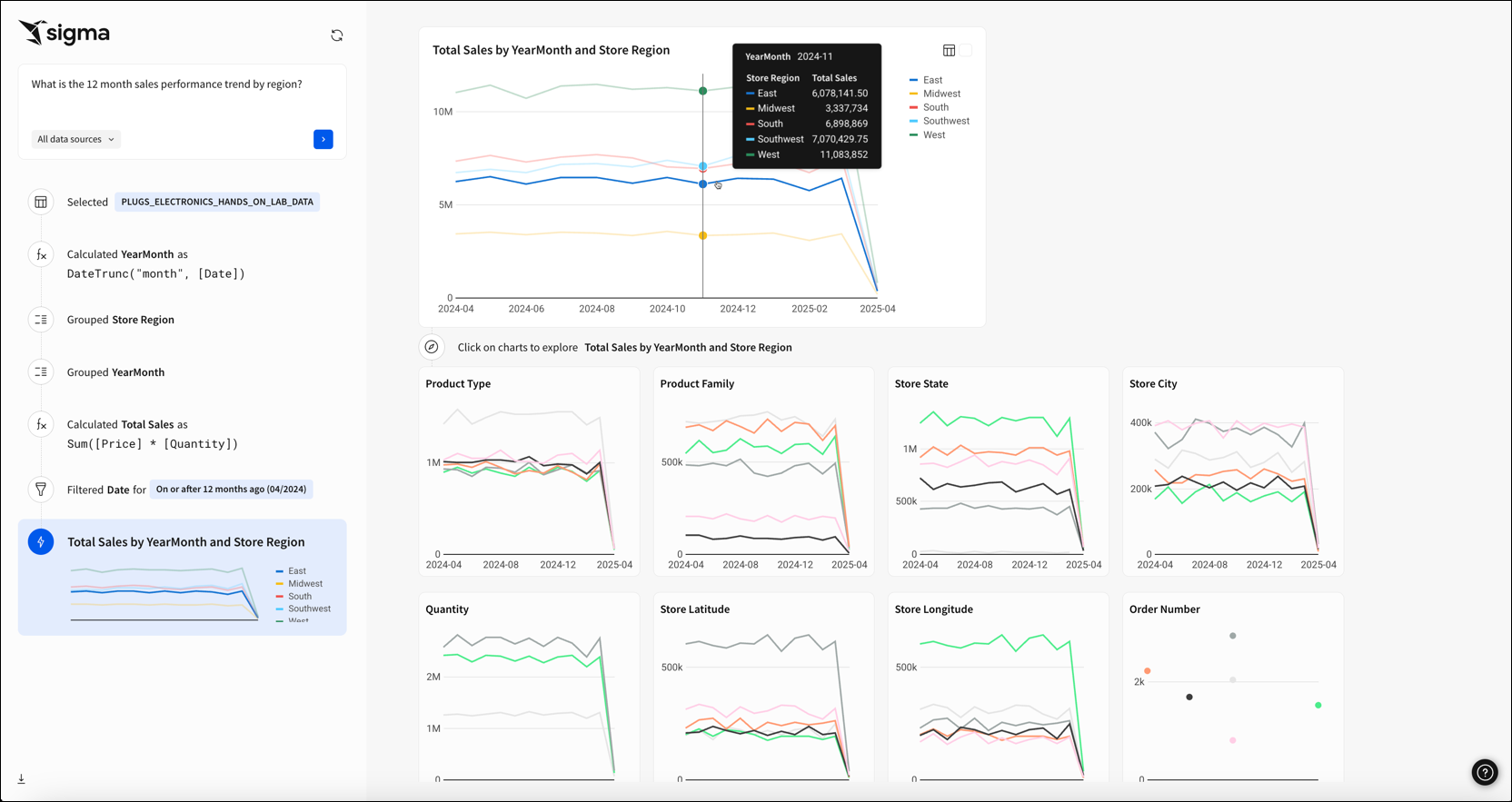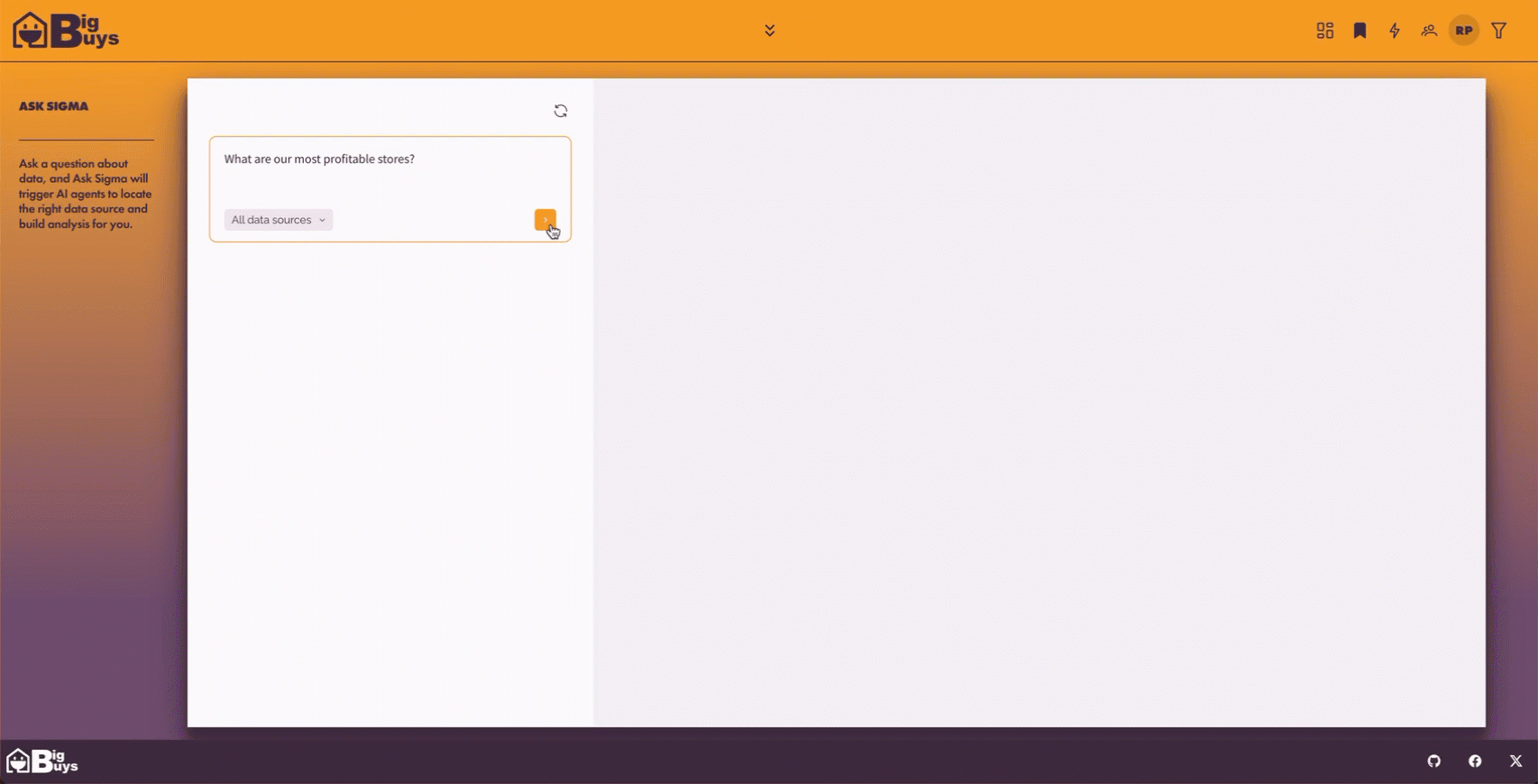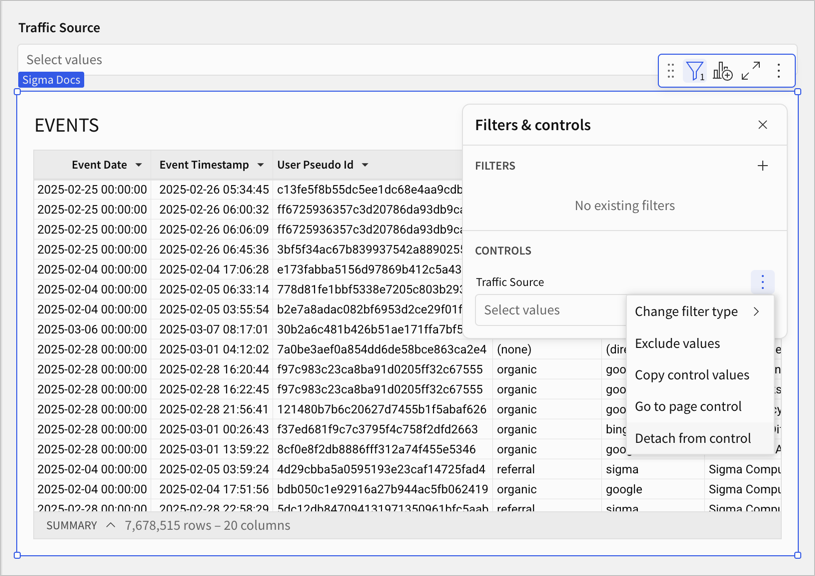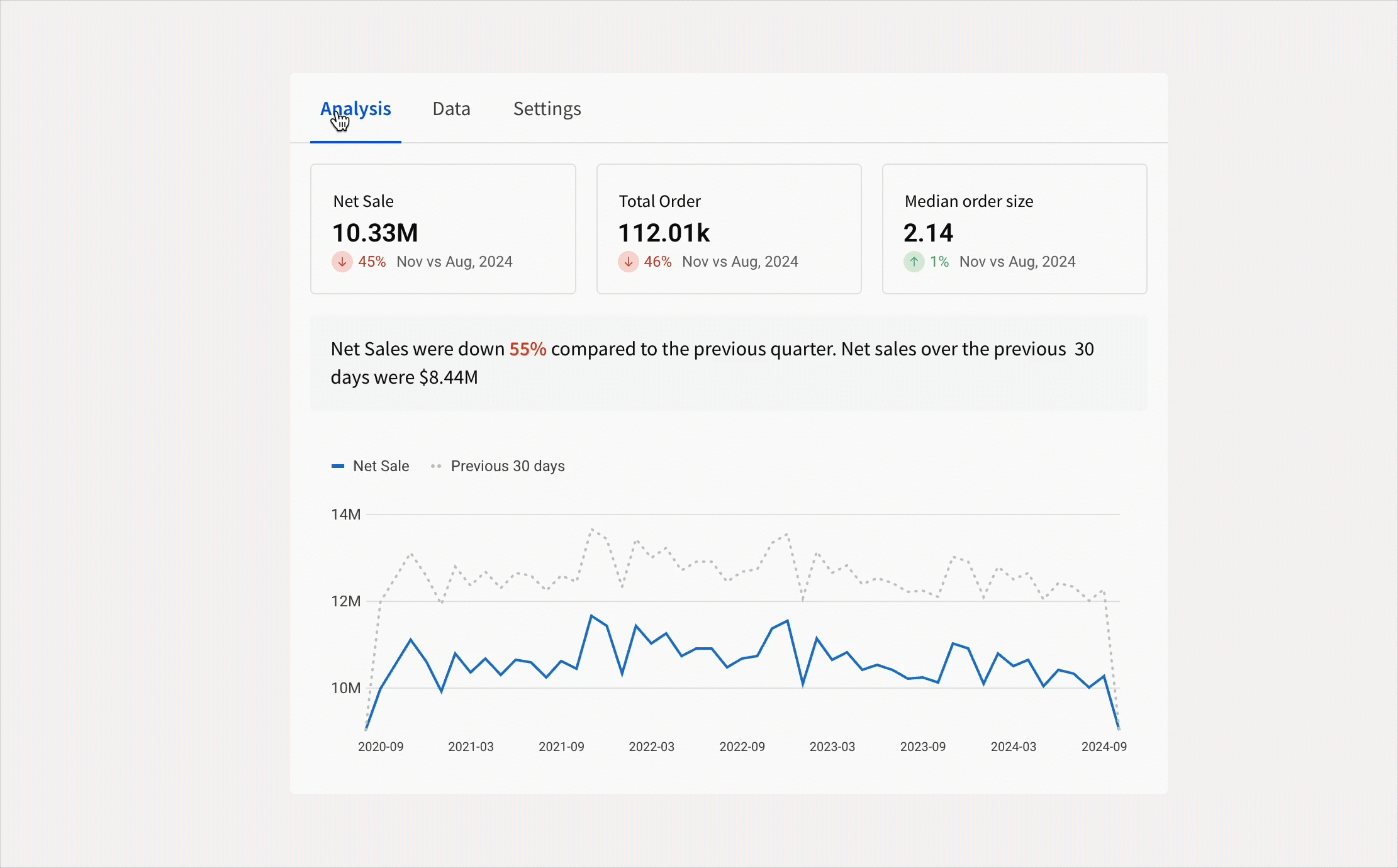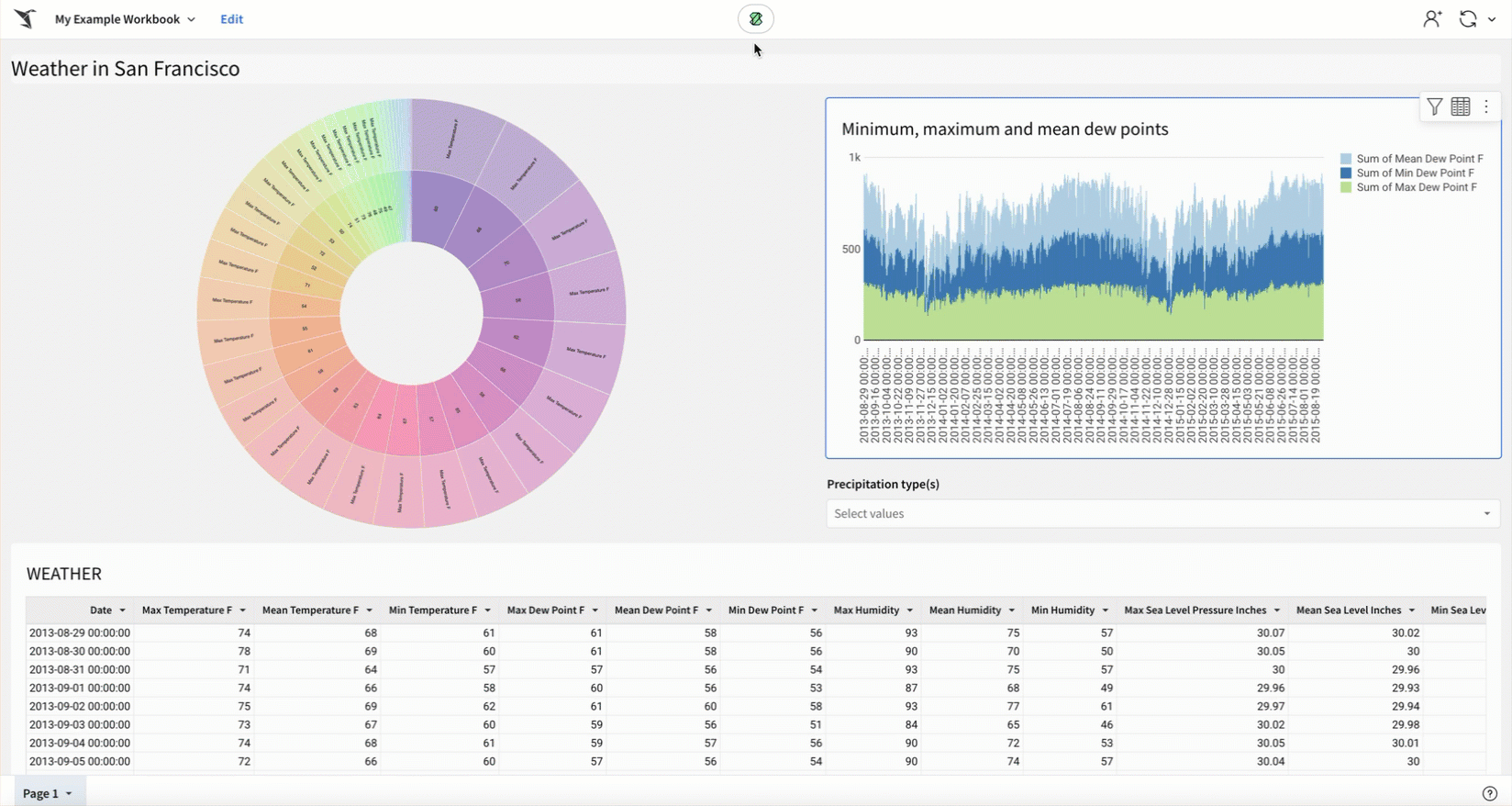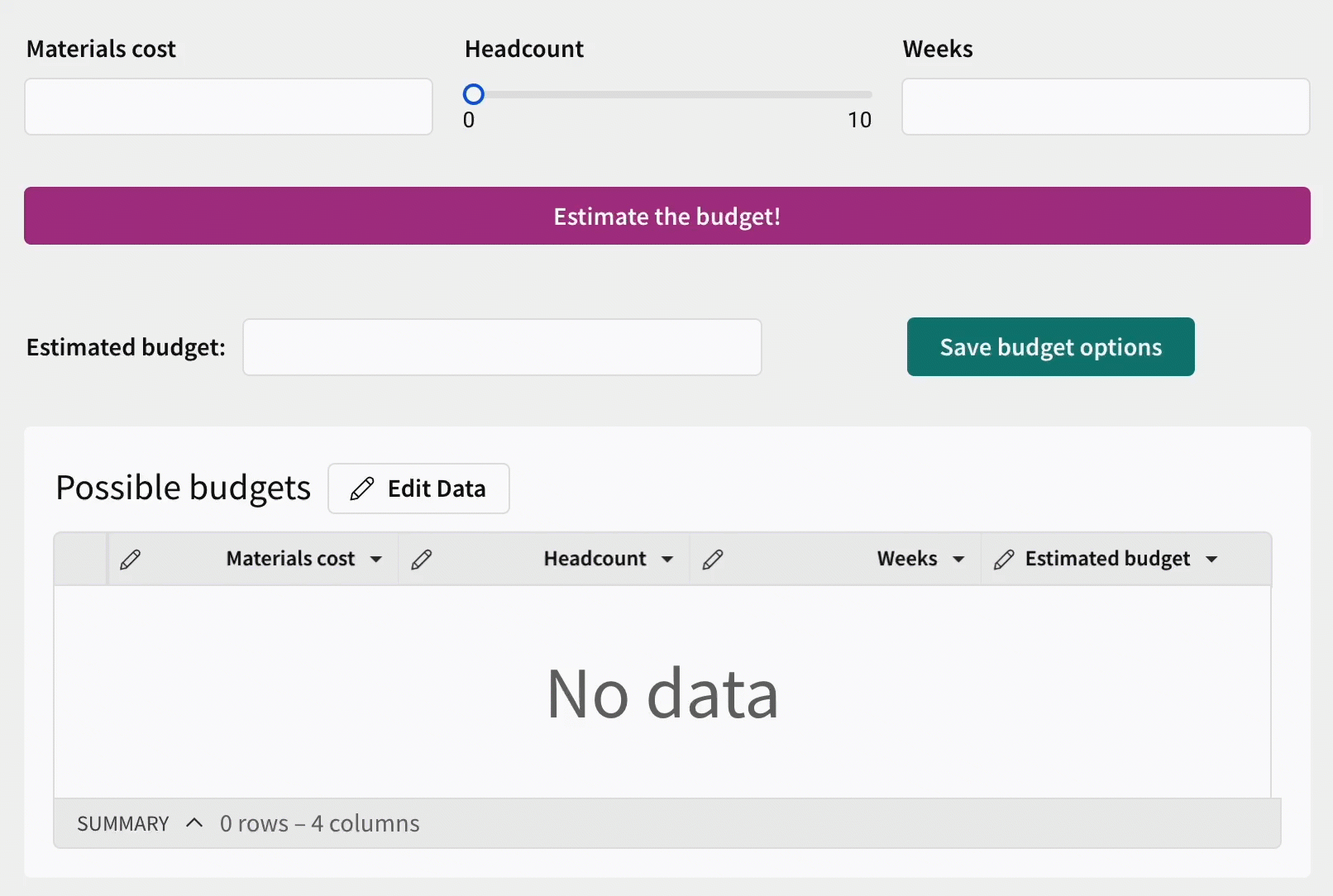Admin
Allow users with View license to ask natural language queries with Ask Sigma
The Use Ask Sigma permission can now be enabled for users with the View license (or Lite license). See Account type and license overview. No existing account types were changed. To enable Ask Sigma for users who did not previously have access, update their account types to add the permission.
To continue analysis in a workbook, a user's account type must also have the Create, edit, and publish workbooks permission enabled.
Allow users with View license to browse connections
The View connections permission can now be enabled for users with the View license (or Lite license). See Account type and license overview.
Users with this permission enabled on their account type can view database or catalog, schema, or table names that they have access to. This permission does not grant access to data in connections. See Manage access to data and connections.
New permission for calling stored procedure actions
Manage which users can call stored procedure actions from a workbook with the Call stored procedure actions permission. The permission requires an Act or Essentials license. For more details, see Account type and license overview.
Users must also have access to the stored procedure in the connection. For all requirements, see Create actions that call stored procedures (Beta).
Data apps
Input table support on BigQuery connections (Beta)
Input tables are now compatible with BigQuery connections. The dynamic workbook elements support structured data entry, allowing you to integrate new data points into your analysis and augment existing data from your data platform.
For more information about input tables and how to use them, see the following documentation:
Update row and Delete row actions (GA)
Use the Update row and Delete row actions to modify input tables. Update row allows user interaction to update values in an existing row, while Delete row removes an entire row. These actions are designed to support form functionality but can be used in other ways to accommodate different data app use cases.
For more information, see Create actions that modify input table data.
Multi-select columns in input tables (Beta)
Use multi-select columns in input tables to enable users to add one or more discrete values to a single cell. You can create and manage a predefined list of custom values or choose an existing data source or element in the workbook to populate the list. Values are displayed as individual pills and can be assigned different colors for visual differentiation and clarity.
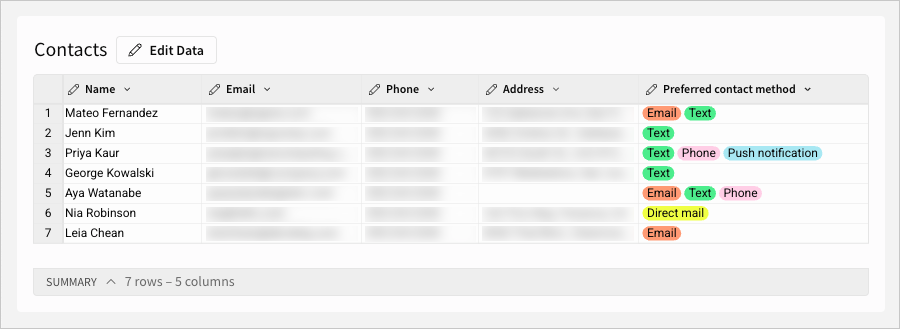
For more information, see Configure multi-select columns on input tables.
Created at/by columns in input tables (Beta)
Add Created at and Created by columns to input tables to record metadata associated with each row’s creation.
| Created at | Date and time the row was added to the input table. |
| Created by | Email address of the user who initially added the row to the input table. |
For more information, see Add row edit history.
Custom context menu actions (Beta)
Add custom context menu items in tables, pivot tables, input tables, and charts to provide clear, discoverable triggers for actions relevant to selected cells and data points. You can add standalone menu items or create nested submenus that execute any action effect, including calling stored procedures, generating iframe events, and opening modals.
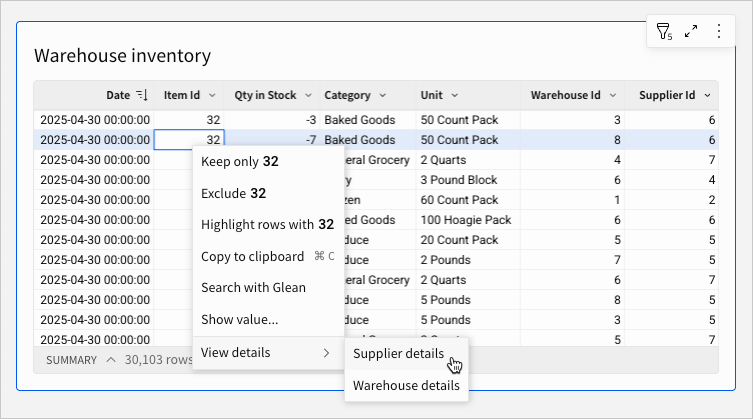
For more information, see Create custom context menu actions (Beta).
PostgreSQL support for calling stored procedure actions
You can now call a stored procedure on a PostgreSQL connection from a workbook action.
For more details, see Create actions that call stored procedures (Beta).
Data modeling
Data models (GA)
Data models provide a semantic layer for your data, letting you organize and store data in a structured governed way without modifying raw data. You can create and manage reusable data elements with visual semantic modeling in an entity relationship diagram, empowering business users to independently model and explore data.
For more details, see:
Define relationships in data models (GA)
Add relationships between tables in a data model to enable business users to work with related data without performing ad hoc joins. A relationship defines the join logic for Sigma to use to join the tables, making the columns from both tables available to the source table for analysis and exploration on demand. When a user analyzes the source table in a workbook and adds a related column, Sigma performs the join.
Relationships between data model tables only support many-to-one or one-to-one joins, and are not automatically created between tables from a connected data source, even if the table has primary and foreign keys defined.
Newly available functionality:
- Use related columns in data models
- Add relationships to elements disabled as a source
For more details, see Define relationships in data models. For guidance using related columns in a workbook or data model, see Use related columns in a workbook or data model.
Add metrics to data models (GA)
Adding metrics to data models is now generally available. Metrics are dynamic and reusable calculations that are specific to a data source. As such, metrics usually reference specific columns. Create a metric to provide reliable and efficient aggregate calculations, abstracting complex formulas away from business users.
When defining a metric on a data model, you can reference other metrics in your formula. Metrics propagate downstream, so a metric defined on one data model is also available to any data elements that use that data model as a source.
For more details, see:
Column-level security for data models (GA)
Applying column-level security (CLS) to elements in data models is now generally available. Column-level security restricts access to column-level data, ensuring that sensitive and confidential information is secure and accessible only to authorized users. Configure CLS in a data model element for specific users or teams.
See Configure column-level security for more details.
Updated behavior when targeting a data model source parameter from a workbook control
When passing values from a workbook control to a data model, you no longer need to target the source parameter with a specific data model table element. Instead, you can associate a control element in the workbook with a control element in the data model itself.
Existing workbook control elements that target data model elements with source parameters continue to work.
For more details, see Create and manage a control element.
Map changed columns in a data model
When you publish a data model with changes that could break downstream elements, you are now prompted to map changed columns to prevent errors such as Unknown column [columnID] or Column [ColumnID] does not exist.
For more details, see Map changed columns in a data model.
Search and discovery
Drag to move the live chat window
When chatting with a Sigma support engineer, you can now click and drag the handle on the top left corner of the live chat window to move it to a more convenient location on your screen. This helps you more easily interact with Sigma Support and access key parts of your screen at the same time.
Add shortcuts to documents (GA)
If you want to save links to documents in more than one location, you can add a shortcut. Use shortcuts to make specific data sources easier to find in the source picker, or to organize documents to make key workbooks and data models easier to access.
See Add shortcuts to documents for more details.
Workbook elements
Reference data elements in custom SQL statements (Beta)
You can now reference data elements and other custom SQL elements in SQL statements in Sigma using the sigma_element('Element Title') syntax.
For more details, see Write custom SQL.
Workbook features
Organize columns into folders (Beta)
When working with data elements in data models and workbooks you can organize columns into folders, letting you nest columns into relevant groups. Folders that you create in a data model or parent element are available to downstream elements, like a data element that uses a data model as a data source, or a child element.
For more details on folders, see Organize columns into folders.
Popovers (Beta)
Use popovers to display information in containers anchored to specific button elements. Popovers allow you to present relevant content (tables, charts, controls, etc.) only when needed, creating a more efficient and simplified workbook interface.
For more information, see Create and customize popovers.
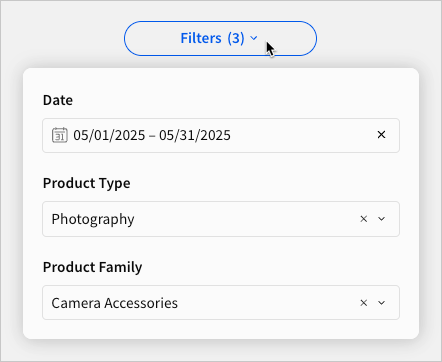
More precise formatting of grand totals and subtotals
You can now format the grand totals and subtotals of a pivot table or grouped table separately from other values in the column. For example, format the grand total row of a pivot table to display numbers in SI units, while the values columns display whole numbers.
For more details, see Format and customize a table.
Export to webhook supports PDF files
Send PDF-formatted files to a webhook endpoint from Sigma.
For more details, see Export to webhook.
Bug fixes
- When adding date data in an input table, the format of the data now respects the locale of the Sigma organization. For example, if your Sigma organization uses a locale of English (Great Britain) and you paste a date value of 10.05.2025 into an input table, the date correctly appears as May 10, 2025.
- When adding a version tag to a data model and swapping sources from one connection to another in cases where the table is available at a different path in each connection, the data sources no longer fail to swap with the error "Failed to find the table in connection".
- Users in an embed can no longer open the source of a data model.


